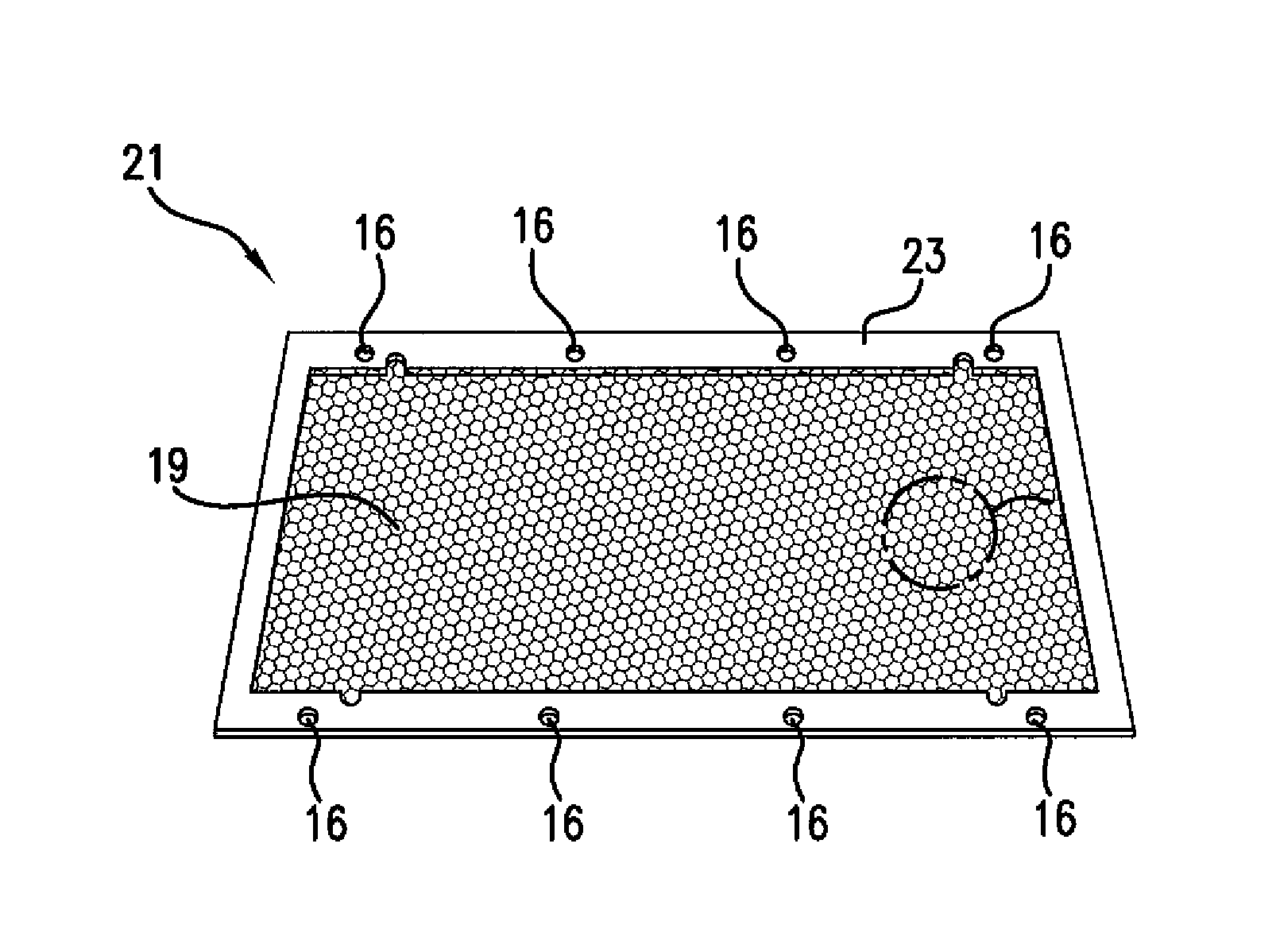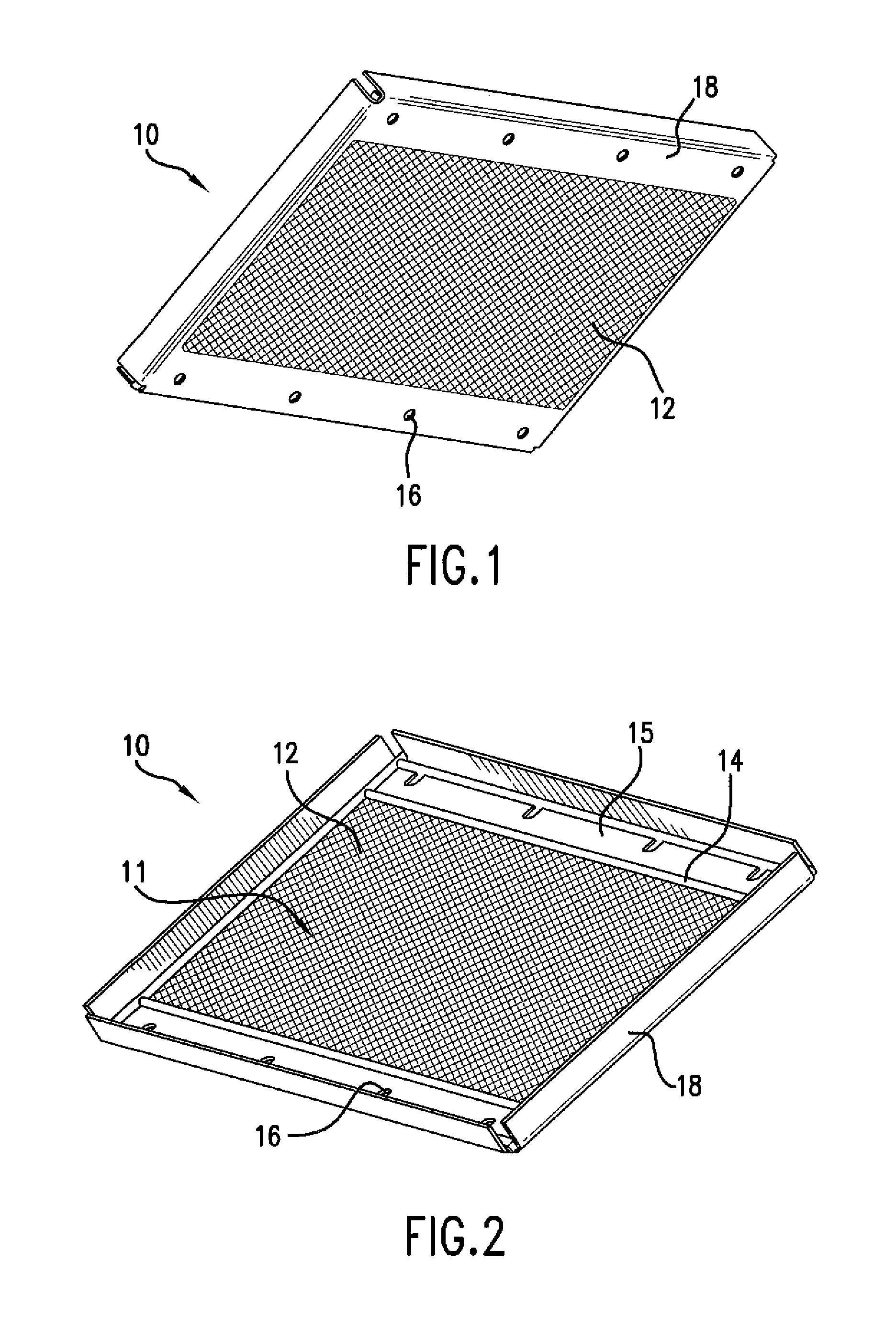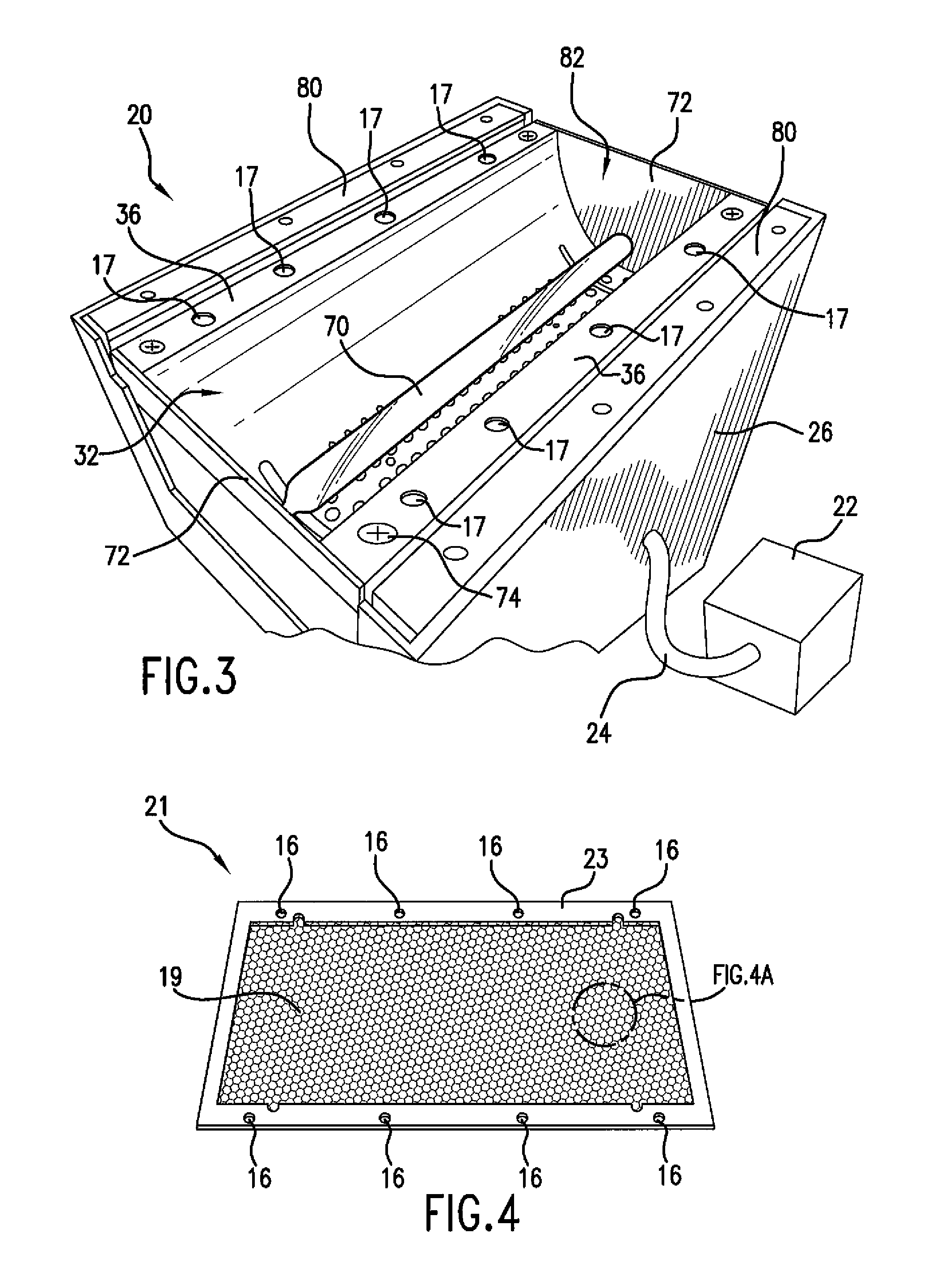RF screen assembly for microwave powered UV lamps
a technology of rf screen and uv lamp, which is applied in the field of microwave-powered uv lamp, can solve the problems of non-uniform mesh pattern, and achieve the effects of optimizing balance, enhancing light transmission in the preferred area of the screen, and increasing flexibility
- Summary
- Abstract
- Description
- Claims
- Application Information
AI Technical Summary
Benefits of technology
Problems solved by technology
Method used
Image
Examples
example 1
[0037]In a typical microwave UV lamp system 20 (e.g., FIG. 3), an estimated 70% of the UV light produced by the bulb will be reflected by the UV reflector(s) and directed through the RF screen to the object that is being exposed. The remaining 30% of the light from the UV bulb is directed through the RF screen without the aid of the reflector. Of the UV light directed toward the RF screen, a significant amount of light, proportional to the percentage of the area occupied by the mesh will be blocked by the screen. In this Example, the expected light transmission (which corresponds to the open area percentage, or transparency, of the RF screen) of a conventional RF screen formed from fine woven wires (e.g., FIGS. 1 and 2) was computed and compared to the expected light transmission of an RF screen of the present invention with regular hexagonal shaped mesh openings. FIG. 8 illustrates the measurements required to compute the expected light transmission.
Conventional Square Mesh
[0038]Th...
example 2
[0044]One of the benefits of utilizing a mesh pattern with 5 or more nodes was demonstrated. As indicated above, RF screens function as a “faraday cage” in order to block RF energy from escaping. Thus, the amount of RF energy that “leaks” from the RF screen correlates to the largest dimension of the individual mesh openings. The inventors have discovered that the RF screens of the present invention are capable of permitting more light transmission without sacrificing an increase in RF leakage.
[0045]As shown in FIG. 8, the “largest dimension” of the individual openings of a conventional RF screen with square or rectangular mesh is the diagonal (shown as a dashed line LDS). For a square, this dimension can be represented as LDS=√{square root over (2)}(L). In contrast, the “largest dimension” of the individual openings of an RF screen of the present invention utilizing hexagon-shaped openings (shown as dashed line LDH) corresponds to the distance between one node and the corresponding ...
PUM
| Property | Measurement | Unit |
|---|---|---|
| radio frequency | aaaaa | aaaaa |
| RF frequency | aaaaa | aaaaa |
| area | aaaaa | aaaaa |
Abstract
Description
Claims
Application Information
 Login to View More
Login to View More - R&D
- Intellectual Property
- Life Sciences
- Materials
- Tech Scout
- Unparalleled Data Quality
- Higher Quality Content
- 60% Fewer Hallucinations
Browse by: Latest US Patents, China's latest patents, Technical Efficacy Thesaurus, Application Domain, Technology Topic, Popular Technical Reports.
© 2025 PatSnap. All rights reserved.Legal|Privacy policy|Modern Slavery Act Transparency Statement|Sitemap|About US| Contact US: help@patsnap.com



